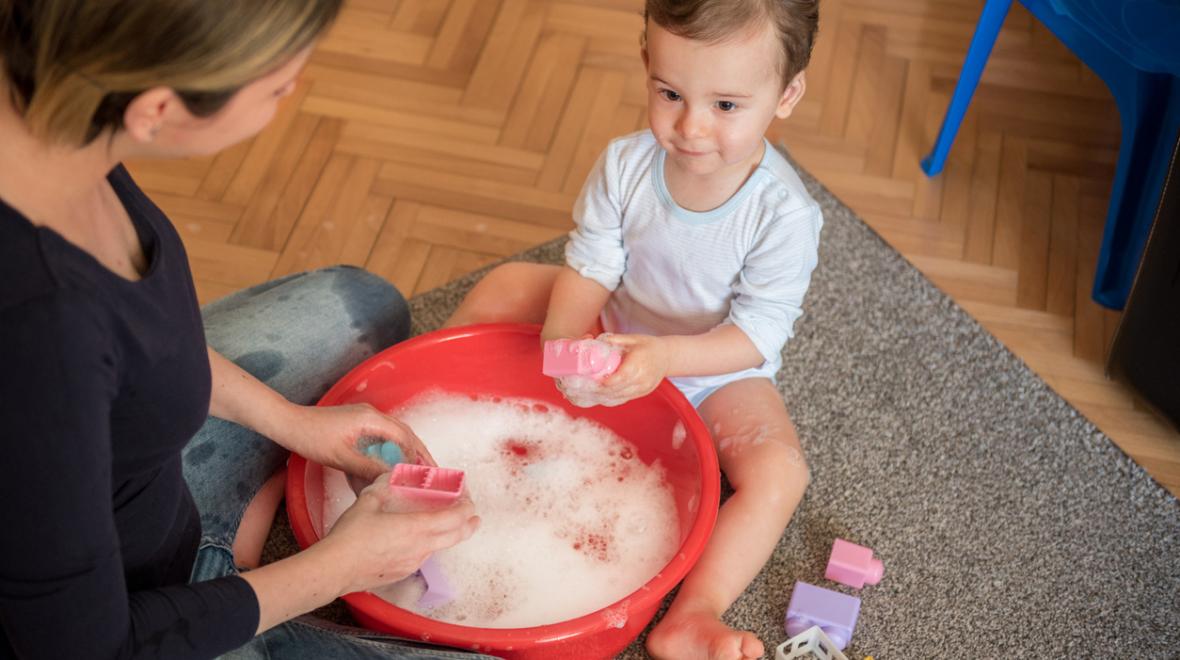
Editor's note: This article was sponsored by Seattle Children's Hospital.
It’s the end of the day, Lego bricks carpet your living room, and your child is refusing to clean up.
Before jumping into a power struggle, consider what is driving the behavior and how you can respond accordingly, says Positive Parenting educator Anne Granderson.
An overwhelmed child might need a parent to guide the effort, saying, “You grab the blue ones, I’ll grab the red.” Another child might be more motivated if something pleasant follows the clean-up, such as playing a favorite board game. Other children might respond well to a playful approach, with everyone cleaning as much as possible while a favorite song blasts.
“I love finding ways to build in lightness and play,” says Granderson, who teaches this parenting approach to staff at Seattle Children’s Hospital as well as the broader community.
What is Positive Parenting?
Positive Parenting is an overarching term that encompasses “conscious parenting” and “gentle parenting,” she notes. It doesn’t prescribe a one-size-fits-all guide, but rather finding what feels respectful and effective for a particular family.
“It’s about parents building their own capacity to be able to better support their kids,” she says.
The goal of Positive Parenting is to create a safe, loving environment where we all have some control over our experiences, she says. This approach uses empathy and respect to guide parent-child interactions, engaging and incorporating the child’s point of view and their strengths. Discipline is used to teach, rather than to punish. And, through connections, parent modeling and stable routines, kids learn that all feelings are okay — even if all actions are not.
“In the long term, you want a kid who can talk to you about hard things; a child who is confident, self-assured and thoughtful — one who can communicate their needs,” says Granderson.
But, what if it doesn’t work?
There may be moments when children don’t respond to creative approaches and empathetic guidance. In those cases, a parent can set a firm boundary with a logical outcome. In the stalled-out cleaning scenario, for instance, the toys that don’t find their home could go into a special bag. If they show up more than once, it’s a sign the family no longer needs them, and they can be donated.
In that case, the message is clear: “If you value things, take care of them,” says Granderson. She cautions, though, that this consequence must be communicated calmly and respectfully — not in a heated rampage with the goal of punishing a disobedient child.
If clean-ups have become a persistent challenge, parents can consider what structures and systems can be put in place to avoid such conflicts. For example, parents could encourage kids to put away one toy before getting out another. This creates a habit of keeping the play space tidy while building confidence in knowing where things go. Simplifying one’s space could help, too. If everyone knows where things go, there is less opportunity to feel overwhelmed by clutter.
Creating routines and systems
Building in structures and creating routines are key components in this intentional parenting approach. They create stability and help manage children’s expectations. They also remove some of the daily decision-making for parents.
“What are things you could build into your life for more consistency and predictability that make kids feel safe, secure and empowered?” explains Granderson. “Then you don’t have to think about them and you have more mental capacity.”
Set routines and schedules often work well before and after school. Maybe Fridays are always family movie nights and Sunday afternoons are reserved for room clean-ups.
If you’re having a reoccurring struggle, consider if any structural changes could help address it. For example, at what point does the morning routine hiccup? Families can brainstorm solutions to persistent challenges in a weekly family meeting. Together, they can create checklists and other visual reminders of schedules. These don’t have to be fancy laminated charts, Granderson notes, adding, “The simpler and more child-developed, the better. [That helps them] feel more in control.”
Finding emotional regulation
In her Seattle Children’s parenting groups, Granderson frequently hears from caregivers who don’t know what to do when their child loses their temper and “freaks out.”
“Often these big emotions are triggering for us as adults,” she says. “Emotions are contagious, just like germs.”
Brain science helps guide Positive Parenting approaches during such meltdowns. The goal is to get our children — and ourselves — back into our “thinking brain.” When children are dysregulated, they are not ready to hear advice or follow instructions.
Finding calm might be different for children at various ages and with different temperaments. For a toddler in the throes of a tantrum, a parent might sit on the floor and quietly read a picture book. An older child may need to listen to music alone before having a conversation. Taking a moment to regain composure is important for parents, too.
"If we’re able to take that pause, we will be much more effective in responding to our kids,” says Granderson.
When your child is ready to connect, brainstorm how they could approach a situation differently, or even offer a chance for a do-over. Consider how you can build on your child’s strengths to help them overcome their missing skills. Connect with empathy and with the goal of teaching, not shaming or punishing.
“Where did we get this wild idea that to do better, we need to feel worse?” Granderson says.
But, positive all the time?
Striving to be persistently positive can feel exhausting, or downright impossible, Granderson acknowledges. Practicing Positive Parenting doesn’t require a constantly cheerful attitude and never-fading smile.
“It’s really about being more authentic,” she says. “It’s intentional, respectful, peaceful.”
Parents are people, too, and it’s okay to let your kids understand that. If you do get upset, help your child understand your experience. Maybe you were tired and juggling too many things. Own your mistake and model how you’re learning, too.
Even simple changes can have an outsized impact on family dynamics, Granderson says.
“You may not yell as much and you might like your kids more. It’s not always going to be perfect, but it will feel much better.”
Positive Parenting PrinciplesAnne Granderson’s top 10 strategies for building cooperation:
|
|
Sponsored by: |












